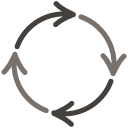
Meetings have notoriously earned a bad rap as time-wasting and sleep-inducing. However, this negative perception stems from poor management rather than the concept of meetings themselves. When executed correctly, meetings can become invaluable tools for team motivation, morale, and productivity. The key to transforming these gatherings lies in their preparation and execution. Setting a clear agenda beforehand provides direction, while establishing tangible goals and assignments ensures accountability and progress.
One of the most effective strategies for improving meeting productivity is the elimination of distractions. This can be achieved by banning non-essential devices and being stringent with timekeeping. By keeping meetings concise and focused, participants remain engaged and contributions become more meaningful. Additionally, distributing important information in advance allows attendees to come prepared, making discussions more substantive and decision-making more efficient.
The composition of the meeting also plays a critical role. Being selective about attendees ensures that only relevant stakeholders are present, making the meeting more dynamic and reducing the likelihood of off-topic discussions. This selectivity reinforces the value of each participant's time and contribution, leading to a more focused and purposeful meeting environment.
In conclusion, redefining the structure and expectations of meetings can lead to significant improvements in team dynamics and overall productivity. By adopting these strategies, meetings can shift from being dreaded time sinks to becoming catalysts for motivation and progress. Remember, the goal of any meeting should be to emerge with clearer objectives, stronger alignment, and a renewed sense of purpose.






































